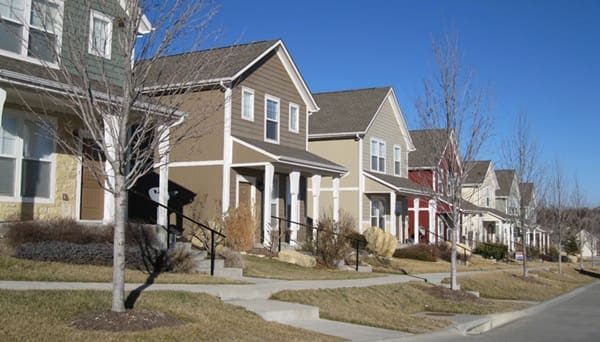How Midwest Housing Market Shifts Are Creating New Challenges for Affordable Housing Access
The Midwest housing market is experiencing unprecedented changes that are reshaping affordability and accessibility across the region. Once known for stable, affordable housing options, states from Ohio to Illinois are grappling with rising rents, shrinking inventory, and increased competition from coastal migrants seeking lower living costs. These market dynamics are creating new pressures on housing assistance programs and forcing families to navigate increasingly complex pathways to secure stable housing.
Unlike the dramatic price spikes seen in coastal markets, Midwest housing challenges are more nuanced, involving gradual price increases combined with stagnant wages and limited housing stock. This “quiet crisis” is pushing more working families into housing insecurity, creating longer waiting lists for assistance programs, and straining local resources designed to provide emergency housing support.

The Economics Behind Midwest Housing Pressure
Midwest housing markets are experiencing a perfect storm of economic factors that challenge traditional assumptions about regional affordability. Population migration from high-cost coastal areas has increased demand in previously stable markets, while new job opportunities in technology, healthcare, and logistics are attracting workers faster than housing can be developed.
Local wages have not kept pace with these housing cost increases, creating affordability gaps for existing residents. Manufacturing job losses have been offset by service sector growth, often at lower wage levels that make housing costs more burdensome. The result is a growing number of working families who earn too much to qualify for traditional assistance but struggle to afford market-rate housing.
Property tax increases further compound affordability challenges. As property values rise, longtime homeowners face higher tax burdens, while renters experience cost increases passed through by landlords. These trends create housing instability across multiple income levels.
Housing Scarcity and Its Ripple Effects
The Midwest’s housing inventory shortage creates cascading effects throughout local housing markets. Limited availability of affordable starter homes pushes potential homebuyers into rental markets, increasing competition for rental units and driving up rents. This particularly impacts working families and seniors on fixed incomes who compete with higher-income renters for the same properties.
Construction of new affordable housing has not kept pace with demand in most Midwest markets. Local zoning restrictions, environmental regulations, and labor shortages contribute to slow housing development. Many communities lack the infrastructure needed to accommodate rapid population growth, leading to housing shortages that affect multiple income levels.
The Growing Demand for Housing Assistance Programs
Housing assistance programs across the Midwest are experiencing unprecedented demand as more families struggle with housing costs. Section 8 Housing Choice Voucher programs, traditionally serving very low-income households, now have waiting lists that stretch for years in many communities. Emergency rental assistance programs, designed for temporary crisis intervention, are seeing sustained high demand that suggests deeper structural housing affordability problems.
The demographic profile of families seeking housing assistance has expanded beyond traditional low-income households. Working families, seniors on fixed incomes, and individuals with disabilities are increasingly relying on assistance programs to maintain housing stability. This broader demand base creates longer waiting periods and more competition for limited program resources.
State housing agencies are responding by diversifying program offerings and seeking new funding sources to address the growing need. However, federal funding for housing assistance has not increased proportionally to demand, creating gaps between available resources and community needs. States like Ohio have developed comprehensive Section 8 waiting list systems to help families navigate multiple program options, but demand still exceeds available assistance.
Regional Approaches to Housing Solutions
Midwest states are developing innovative approaches to address housing affordability challenges that reflect regional economic conditions and political priorities. Some states focus on increasing housing supply through zoning reform and developer incentives, while others emphasize tenant protection and rental assistance programs.
Regional cooperation between states and metropolitan areas is becoming more critical as housing markets cross traditional boundaries. Some metropolitan areas are developing regional housing authorities that can address housing needs across multiple jurisdictions more effectively than individual programs.
Public-private partnerships are emerging as essential tools for developing affordable housing in Midwest markets. These collaborations leverage public resources to attract private investment, often creating mixed-income communities that serve diverse populations.
Technology and Access to Housing Resources
Digital platforms are playing an increasingly important role in connecting families with housing resources across the Midwest. Online application systems, waitlist management tools, and resource databases help families navigate complex assistance programs more effectively, particularly in rural areas where physical access to housing authority offices may be limited.
Mobile applications and text messaging systems help families stay informed about program availability and application deadlines. However, digital divides mean that some families still lack access to these technological resources, requiring continued support for traditional application methods.
Looking Forward: Sustainable Housing Solutions
The Midwest’s housing challenges require long-term solutions that address both supply and demand factors affecting affordability. Sustainable approaches must consider regional economic development, demographic trends, and environmental concerns while ensuring that housing remains accessible to diverse income levels. This balancing act requires coordination between housing agencies, economic development organizations, and community planning efforts.
Investment in workforce housing—affordable options for working families who earn too much for traditional assistance but struggle with market-rate housing—represents a key opportunity for Midwest communities. These programs can help retain workers, support local businesses, and maintain community economic diversity. However, they require innovative financing mechanisms and political support for inclusionary development policies.
Building Resilient Housing Systems
The Midwest’s experience with housing market changes offers lessons for building more resilient housing systems that can adapt to economic fluctuations and demographic shifts. Diversified housing assistance programs, flexible funding mechanisms, and regional coordination create stronger safety nets for families facing housing challenges.
Success in addressing housing affordability requires recognizing that housing stability affects all aspects of community well-being, from economic development to educational outcomes. Communities that invest in comprehensive housing strategies often see benefits that extend beyond individual families to strengthen entire regional economies and improve quality of life for all residents.













